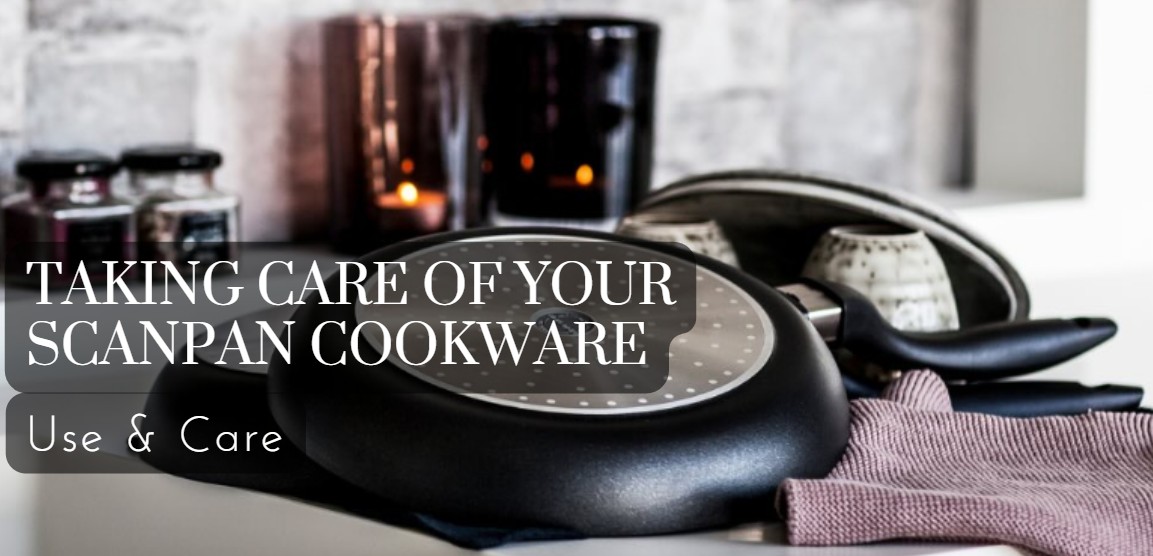Taking care of your non-stick pans properly is essential to maximize their lifespan and maintain their superior cooking performance. This guide provides comprehensive instructions for daily use and long-term maintenance, ensuring your cookware remains a reliable kitchen tool for years to come. Let’s delve into the best practices of Scan Pan Care to keep your pans in top condition.
Before you begin enjoying the benefits of your new non-stick pan, a few initial steps will set the stage for lasting performance.
Before First Use:
It’s crucial to prepare your pan correctly before its initial use. Start by removing any labels or packaging. Then, wash the pan thoroughly in warm, soapy water using a soft sponge or cloth. Ensure you rinse it completely to remove all soap residue. After washing, dry the pan meticulously with a clean towel. If your pan includes a glass knob that requires assembly, refer to the user’s guide for specific directions on how to attach it securely. This initial cleaning and preparation are fundamental steps in scan pan care, ensuring a clean surface ready for cooking.
Certain products can negatively impact the non-stick properties of your pan. Avoiding these is a key aspect of scan pan care.
Never Use Aerosol Sprays or Cooking Sprays:
It’s imperative to avoid using aerosol sprays or cooking sprays on your non-stick pans. These sprays contain propellants and additives that, over time, can build up on the non-stick surface. This residue can carbonize with heat and create a sticky film, ultimately diminishing the non-stick capabilities of your pan. Instead of relying on these sprays, opt for natural alternatives such as your preferred cooking oil, butter, or fat. You’ll find that with quality non-stick cookware, you often need very little or even no added fat for cooking, making for healthier meals and easier scan pan care in the long run.
To achieve the best culinary results and optimize your cooking experience, consider these recommendations for effective scan pan care during use.
For Best Cooking Results:
Preheating your pan correctly is a game-changer for cooking efficiency and food quality. We highly recommend heating your non-stick pan over medium heat for approximately 60 to 90 seconds before adding food. This preheating process brings the pan to the ideal cooking temperature efficiently, saving energy and ensuring even heat distribution. You’ll know your pan is ready when it’s nicely heated – perfect for searing meats, browning vegetables, and creating flavorful pan sauces by deglazing.
While our pans are durable, using excessively high heat is generally not necessary for most cooking tasks and can shorten the lifespan of any non-stick coating. If you do need to cook at higher temperatures, it’s important to choose an oil with a high smoke point. Excellent choices include grape seed oil, avocado oil, rice bran oil, or refined vegetable oils. These oils are less likely to break down and create residue at higher temperatures, contributing to better cooking and easier scan pan care.
To ensure your non-stick pan provides you with years of excellent service, consistent and proper care is paramount. Adhering to these guidelines is at the heart of effective scan pan care.
For a Lifetime of Use, Always Do the Following:
Consistent cleaning after each use is non-negotiable for maintaining your pan’s non-stick properties. After every cooking session, clean and rinse your pan promptly. Use warm to hot soapy water and a gentle sponge. This routine cleaning is the cornerstone of scan pan care, preventing food buildup and maintaining the non-stick surface.
 non stick pan cleaning
non stick pan cleaning
Don’t hesitate to use a natural bristle brush or a nylon-safe scrub brush for more stubborn food residue. For particularly sticky situations or tougher stains, you can use a mild scouring cleanser like Bar Keepers Friend. Apply the cleanser gently with a soft cloth or sponge, and rinse thoroughly. Remember, thorough cleaning is integral to scan pan care.
Crucially, ensure that no visible food particles or grease residue remains on the pan after cleaning. Even small amounts of leftover residue can carbonize when reheated and cause food to stick during your next cooking session. If you notice any residue after your initial cleaning, don’t hesitate to re-clean the pan using hot water and a bit more detergent. This diligence in removing residue is a key component of proactive scan pan care.
Proper storage is also essential to protect your pans from damage. To prevent scratches and scuff marks on both the exterior and interior surfaces, avoid stacking pans directly on top of each other without protection. When storing your pans, use dividers such as pan protectors (felt or cloth pads) or hang them on a rack. This careful storage is the final step in scan pan care, safeguarding your investment and ensuring your pans remain in excellent condition for countless meals to come. By following these scan pan care guidelines, you are investing in the longevity and consistent performance of your non-stick cookware.
